I love all shades of whites and neutrals.
Even though I flirt with pastels and the whole spectrum of shabby, vintage colours, I always feel at home when I play with neutrals.
I’ve been asked many times where I get all my vintage materials from, so I’ll let you in on a little secret….
Sometimes I have to make my vintage, shabby wares from new things!
[Pin for later]
It’s true!
While I love crisp whites… they don’t carry off the vintage look, so sometimes I have to give them a helping hand to achieve that time worn, shabbilicious appeal.
Over the years I’ve tried most dying techniques; tea, parisienne essence and coffee… and I have to say that I prefer coffee.
All three are great dyes, but they do vary in the final colour you achieve. Coffee looks to me more like the natural colour of aging you get with both fabrics and papers.
Above is my collection of things I intended to dye this week – book paper, calico, wool felt, paper flowers, cotton tape, fabric and paper doilies, lace, ribbon and a small selection of wood items like cotton spools and mini pegs.
All of these things are for my Christmas projects.
I usually dye quite a few things at once, but this technique is so quick and easy I have been known to make up a batch of coffee dye just for one or two items.
How to use coffee as a dye
I’m sure there are many different ways to dye with coffee, this is just the way I do it and what I’ve found works for me.
I make up a strong coffee brew. This one had 10 teaspoons of coffee to about 3 cups of boiling water. Stir to dissolve coffee grounds and leave to cool.
Depending on what I’m dyeing, I use a large bowl for fabrics, laces etc or an oblong lasagna dish for book papers.
I pre rinse all fabrics to remove any sizing and I also add my fabric items to the mix while they are still wet.
Immerse a selection of items into the cold coffee mix. Stir occasionally to ensure all items are completely covered by the liquid.
Dyeing times vary, depending on what you are dyeing, but 30 minutes seems to be my favourite time for most things. You may want to experiment with this to see what works best for the project materials you require.
When I’m satisfied with the colour, I take any fabric items out and rinse under cool running water. You will lose a little colour in this step, plus the item will dry lighter.
Tip: items look darker when they are first removed from the liquid, so aim for a slightly darker colour than you require when finished. You can repeat the process if you decide the item is not dark enough after drying.
Paper’s don’t generally need as long as fabric. If you have a delicate paper item, you can also use a foam brush to paint on dye rather than immersing in the coffee dye.
I like to dry my dyed items naturally, but many people do dry them in the oven.
For seam binding ribbon, I roll it up in a ball, twisting the ribbon in a messy ball and securing with several rubber bands. Immerse in coffee dye. When it dries the colour will vary, which gives it a great vintage look!
Tip: Coffee dyeing is also perfect for any vintage fabric doilies that you can’t remove stains from. The dye covers them up.
So now you know the secret contained in my box of vintage craft supplies!
Do you use any food items for dyeing?
Happy crafting,
Kerryanne
I’d love for you to connect with me at:
Follow on Bloglovin
or if you’d like my posts delivered directly to your Inbox
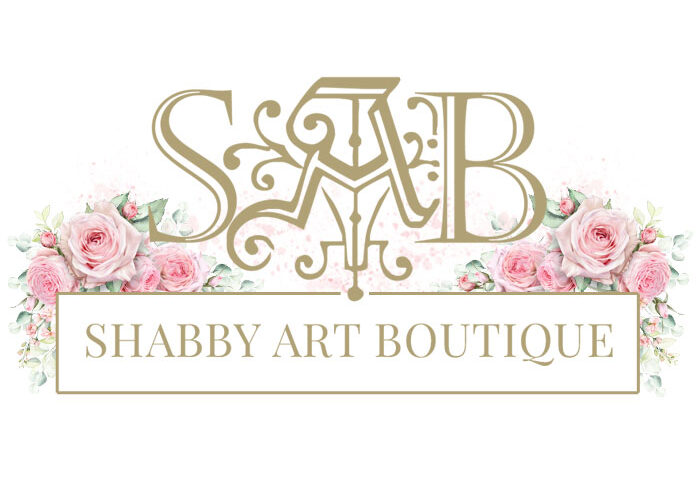
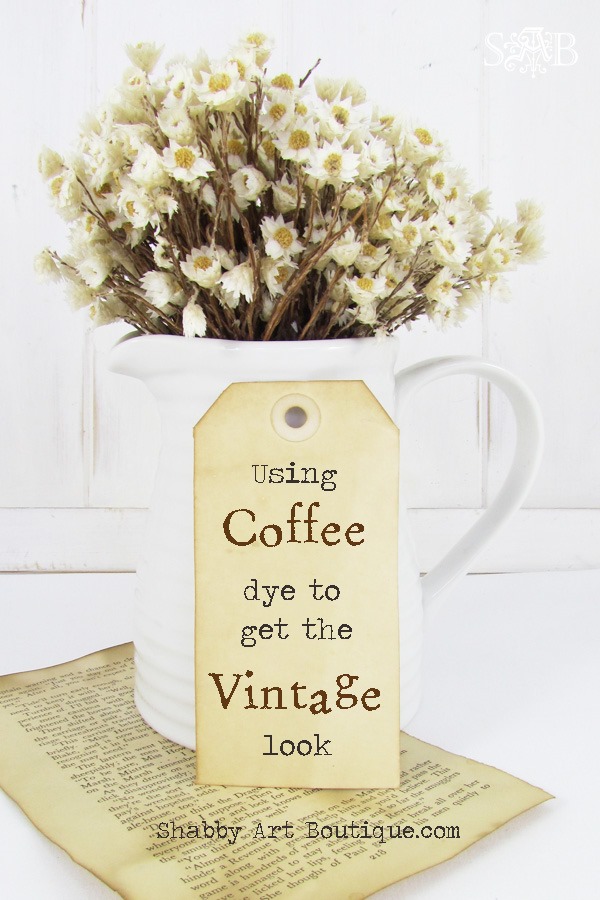
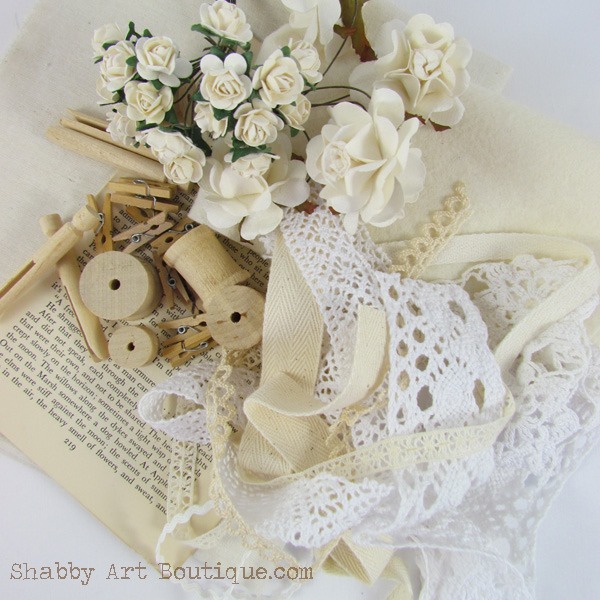
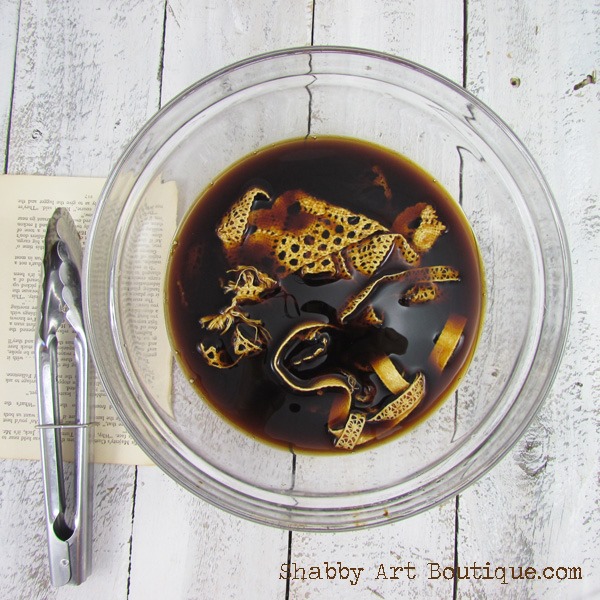
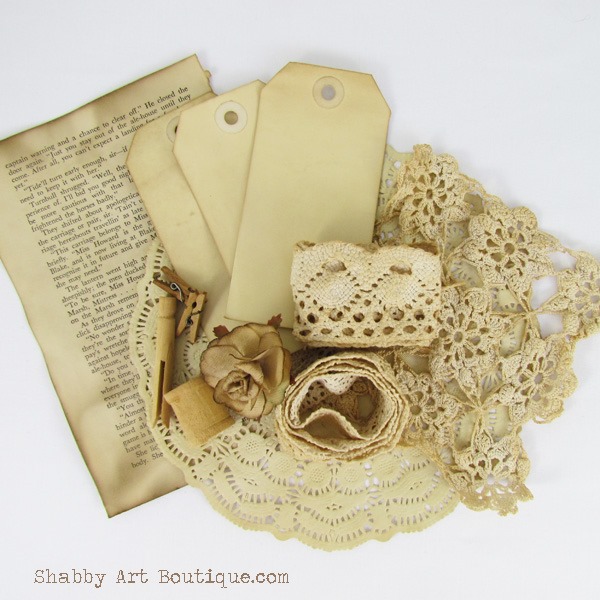
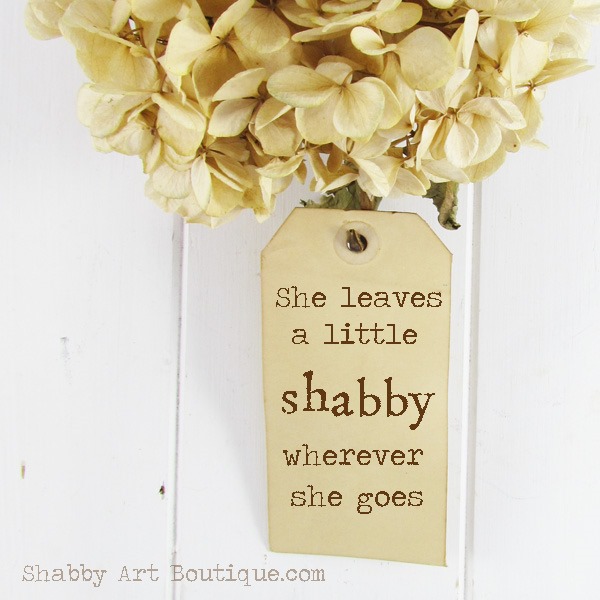





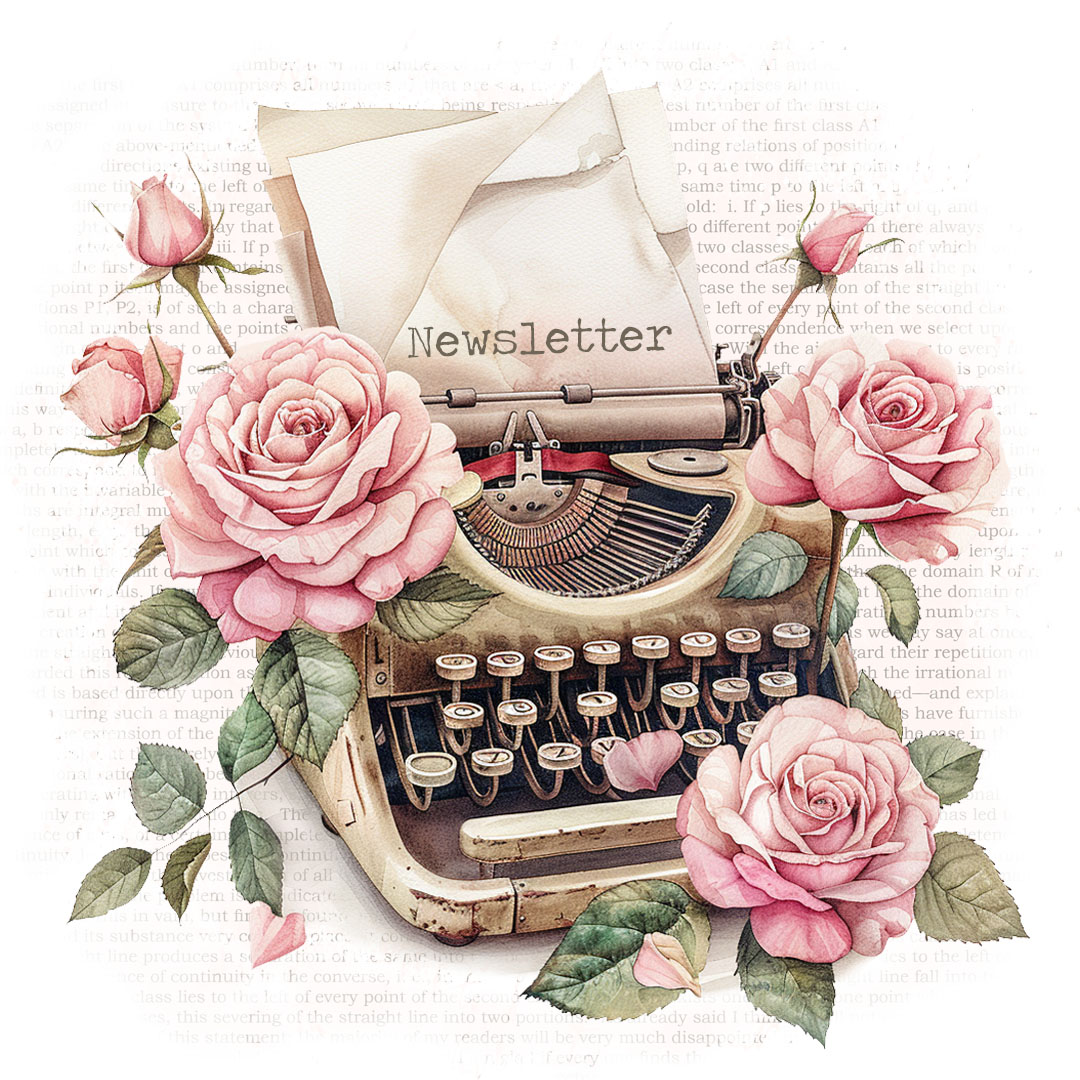

Love this! Thank You for sharing your coffee staining tips with us.
I’m making a 5ft. Long table runner for a wedding but I started making a white one then found out she likes old fasion nuetral colors. I dont want to start over cause I have alot of it done. Would you reccomend dying it or starting over?
thank-you for the tips! I have always used tea and will now try coffee! The one thing I fight with is losing the round circle on the tags..mine always fall off.
ONE QUESTION WHAT TEA YOU USE TO MAKE THE STAIN TAGS
Hi Eleonor, I use instant coffee to make my coffee dye. 🙂
I have used coffee because we don’t often have tea in the house.
I also like the spotted effect that can be achieved by sprinkling coffee granules onto damp paper and shaking them off as they start to bleed.
Toni xx
I have mainly used Pariesienne essence and tea. Have found sometimes that tea can give a “pinky” flush . All depends I guess on the tea brand. Will try coffee and with the portions you have suggested . Thank you Kerryanne. Have a lovely week. Shirley
I’ve not tried coffee for staining….always used tea. This sounds like something I would like to try. Thank you for sharing, Kerryanne!
Debbie
xo
I like using coffee to age my fabric. Sometimes I’ll put the coffee in a small spray bottle and spritz the fabric so that I can have my piece look stained. Thanks for sharing….
I have used tea before but never coffee. Thanks for the tip. I would love for you to link this post up to a new vintage link party this Thursday at 8:00 AM EST. It is Vintage Charm and your links will be seen on four blogs. Join us at http://bluewillowhouse.com. Hope to see you there!
Being from the U.S., I had never heard of Parisienne Essence. I looked it up and see it is similar to a product my mother used called Kitchen Bouquet, a substance used to color gravy. I also saw this could be made by browning, actually blackening, sugar before adding water to create a dark liquid. The coffee method sounds much easier. I’ve used coffee crystals but will try strong coffee made from grounds the next time. I’ve Pinned this to my Crafty Tutorials page. Thanks!
Thanks Kerryanne, and I bet smells wonderful also! Lynn
funny i should read this today….i just tea dyed some lace yesterday with a very strong brew of tea and boiled it for 5 minutes.
Since i like to drink coffee, i used the tea (that never gets used anyway). I love the way it looked but was not dark enough. I will try another dip to get is darker….thanks for a great article…
What a great idea about the stained doilies! I never thought of that, but it does work. I have a dress with a beautiful lace collar, which was spotted. After dyeing, you really couldn’t see the spots anymore! The trick was dyeing without getting the rest of the dress involved, but luckily, it was black! Thanks for some great tips!
How does coffee dyed fabric, especially the natural materials, do for the long haul? I’ve wondered if the ph would damage it over time. That said, I haven’t a clue what the ph of strong coffee is! I’ve thought of buying some cheap test strips to satisfy my curiosity. Paper and such can be sealed with matte medium to prevent deterioration but I don’t know about fabric. Forgive me but my brain sometimes blurs the line between art and craft. I expect art to last generations and sometimes I catch myself expecting the same of craft. But then there’s certainly some craft that should be handed down. Does that make it art? I’ll hush up now before I become annoying when I get off on a tangent like this. Wonderful tutorial by the way. I’m posting it on several of my Pinterest boards…..
Well Lou, I have to confess that I don’t know the ph of coffee and I would never use it on an antique piece or something of great value. I only use coffee dying techniques for crafty projects that will have a limited lifespan. I do however agree with you… We should always understand the longevity of a technique if we are working on an art project. Thanks for the question ?
Question…should the coffee actually be hot in order to set into the fabric…followed by a vinegar dip to set it?
Hi Dana, as I explained in my post, there are many different techniques for dyeing and I am just offering the one I use here. I use it as a cold dye and I do not use vinegar to set it. This technique works perfectly for my crafty projects, but you may have a different or better method that you prefer. Happy crafting, Kerryanne